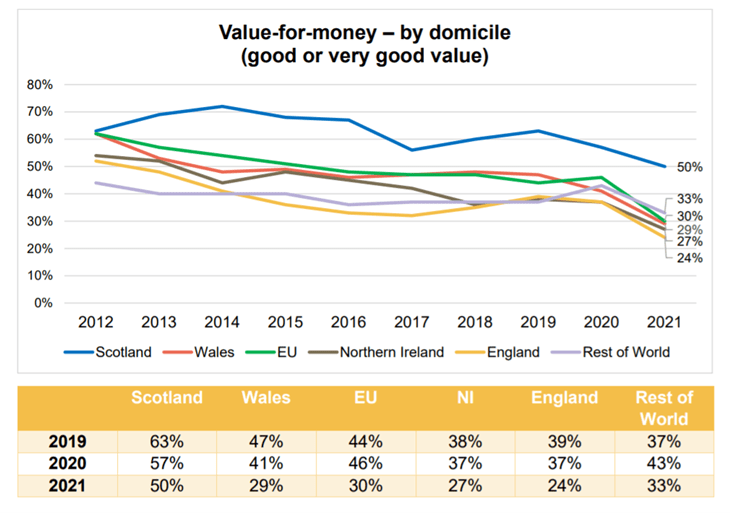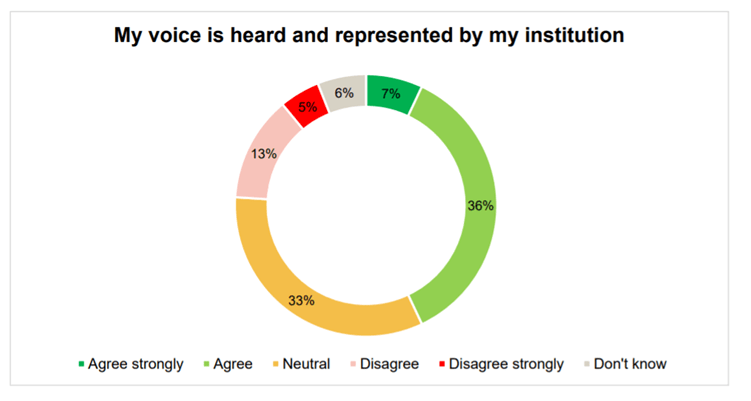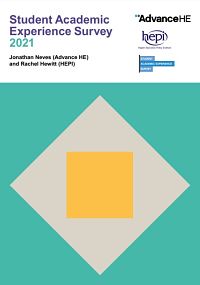Lessons From This Year’s Student Academic Experience Survey
The Higher Education Policy Institute began the annual Student Academic Experience Survey in 2006 and each year since the survey provides a more detailed picture of what has changed and what has stayed the same in higher education in the UK. Despite the extraordinary circumstances of the last year, this year’s survey, its results and recommendations are a great opportunity for higher education institutions to implement long-lasting change. The sector now has the chance to combine the pre-pandemic positives with the current positives, adapting to a new future and a “hybrid higher.”
The latest survey report, written by Jonathan Neves and Rachel Hewitt, provides an insight into assessment, feedback, the varying experiences of different ethnic groups, and the student mental health crisis. Despite an increasingly negative perception of value-for-money, experience versus expectation, and the time taken to receive feedback on assessments, there have been some positives. For example, increasing resilience has been showcased, very few students regret their choice to go into higher education, and there have been positive experiences with online teaching and learning.
However, student wellbeing levels continue to fall every year. Just over one-in-four students feel they have received good or very good value and the proportion of students whose experience has been worse than expected has more than doubled over the last year. Key issues this year include the level of tuition fees being charged in the absence of in-person teaching, fewer timetabled contact hours, fewer opportunities to interact with staff and other students, and a perceived lack of detailed or timely assessment feedback.
Furthermore, despite most students feeling that their institution is committed to eliminating racial inequalities, the view is not as widely held by Black or Chinese students, as they feel that more can be done.
The survey
This year, 10,186 responses were collected from across the UK, all of whom were full-time undergraduate students. Some questions are repeated each year for comparison and others are changed every year. The repeated questions include value-for-money, experience versus expectation, and teaching intensity. New questions this year include students’ sense of belonging, opinions of institutions’ commitment to racial equality, representing the student voice, consideration of withdrawing, and cost of living.
Participants came from a range of ethnic backgrounds and sexual identities. For the first time in this report series, distinct analysis has been conducted on the experience of students who identify as being trans or having a trans history.
Defining value-for-money

Understandably, value-for-money was an important factor among participants. It was broken down into tuition fees, volume of contact hours, quality of teaching, the cost of living, facilities and resources, feedback received, course content, accommodation quality, work placements, career prospects, and student support services. For many, classes and contact hours this year were solely online. This survey found that those who were unable to participate in field trips, placements or lab work felt they had missed out on an essential aspect of their learning experience.
In previous years, policymakers referred to the value of higher education as being linked to student outcomes. What this year’s results show is the way students perceive value-for-money as a relationship between how much they are paying, how they are being taught, and the opportunities they are given.
What do students prioritize?
- A sense of belonging
This was a new focus for this year’s survey, providing an opportunity to understand how a sense of belonging in higher education varies among different groups. Results showed how important it was for students to interact with staff members, each other, and their campus. For BAME and LGB+ students, diversity was also a priority, as well as feeling represented and that their voices were being heard.
- Commitment to race equality
In light of George Floyd’s murder in May 2020 and the Black Lives Matter protests across the world, a variety of industries and sectors found themselves scrutinized by stakeholders calling for acknowledgement of institutional racism and a commitment to anti-racism.
In the survey, two out of three students felt that their institution was committed to eliminating inequalities, with 26 percent agreeing strongly. However, agreement and strong agreement was lower for Black and Chinese students, who felt that their institution could be doing more.
- Use of tuition fees
The survey showed that the most appropriate use of tuition fees was for teaching, student support, and financial support. Investment in the community or in raising profile were seen as less crucial. Institutional sustainability was a new category introduced this year and it received 25 percent.
- Representing the student voice
Understanding and representing the student voice allows institutions to keep improving and to make sure students feel they have a say. Some 43 percent agreed, 33 percent were neutral, and 18 percent disagreed, implying room for improvement and greater focus needed in this area.

What can higher education institutions do?
- Improve feedback provided to students
The need for detailed and timely feedback is important for students. Some students reported receiving one-word comments or question marks in their assessments, rather than constructive feedback they can take on board for their next assessment.
- Provide a hybrid of online and in-person teaching
For many students this year, online learning did not match the quality of in-person teaching. Students suggested in-person teaching for small groups or for subjects that required lab access or art space. They also suggested greater transparency about the learning environment and tutorials in person.
- Better communication with students
A lot of frustration from students came from delayed responses to emails sent to lecturers and tutors, or receiving no response at all. Some also stated they would have appreciated personal check-ins from lecturers and tutors.
- Provide more contact time
Respondents wanted more lectures and seminars as they felt the level of self-study was too much. While they appreciated the blend of asynchronous and synchronous learning, many wanted more synchronous content.
- Improve non-academic support
Many students emphasized the need to improve mental health support. With greater struggles in wellbeing and isolation for a lot of students throughout the pandemic, they thought their university could do more to help.
- More opportunities for students to interact with one another
The lack of in-person teaching has made it harder for students to participate in class discussions or to make friends with the people on their course. Some respondents expressed the need for more opportunities to engage with students outside of lectures and seminars, for example virtual quizzes or ice-breaker sessions.
- The need for more structure, better organization, and planning
Students provided examples such as the registration process at the start of the academic year, the short notice in announcing timetables and assignments, and the clashing of due dates.
- Improve the quality of teaching online
Some students stated the content was too dense, too lengthy, not engaging, and not up-to-date. There were also issues with devices such as microphones and poor internet connections.
- Offer greater flexibility and consideration with grading and rules
Many students felt that their university could have been more caring and compassionate with the rules in light of the pandemic. For example, being more flexible with deadline submission dates or leniency about meeting specific requirements. Many desired a “no-detriment” policy for grading and assessment.
- Use a mixture of online teaching formats
Respondents described the need for greater variety in online delivery formats, such as quizzes and interactive activities. Students felt it was important for lecturers to encourage discussions in class, particularly in breakout rooms or through the use of Kahoot.
The global pandemic has had a huge impact on higher education and these are lessons that can be learnt as we begin to embark on a “new normal.”






























































































